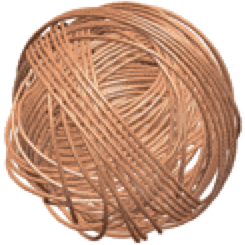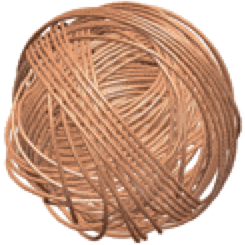Learning from nature’s baggage handlers
Part of a virus’ lifecycle is packing its own genetic material within a protein shell, called a capsid. The process, which takes mere minutes for many viruses called bacteriophages that infect bacterial cells, involves first preparing the shell and then using chemical energy to cram the long, thin nucleic acid inside. Based on a study appearing in Physical Review Letters of how elastic wires pack into spherical shells, researchers are pointing to the possible role of torsional forces in efficient packing in viruses and related problems in biology.
Norbert Stoop at the ETH in Zurich and colleagues used counterspinning spools to force-feed narrow wires of nylon or silicon through a nozzle into a transparent, hollow sphere. The team compared two limiting cases: wires that were allowed to untwist at the nozzle and relieve torsional stress caused by the wire already packed in the sphere, and wires where untwisting was suppressed.
With the aid of tomographic imaging, Stoop et al. showed that the “low-torsion” loading tends to produce a more ordered packing of the wire, which looks like a ball of yarn, while “high-torsion” loading leads to disordered, spaghettilike packing. The experiments, which were supported by numerical simulations, also explored how the packing density for both cases depends on the size of the spherical cavity.
Stoop et al.’s results could apply to a number of problems in biology and medicine, such as treating aneurisms by packing the bulge of blood vessels with coils of thin platinum wires. – Jessica Thomas





